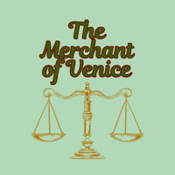
Overview
Synopsis
In the melting pot of Venice, currency opens many doors. A multicultural metropolis, Venice welcomes its arms to all – so long as they come prepared for the brutality of the business of trade. Young Bassanio wants to take a gamble for brilliant Portia, the wealthy heiress of Belmont. He is willing to risk all he has to win her hand, but all he has is not enough. In need of extra money to make a proper suit, Bassanio enlists the help of his merchant friend, Antonio, who takes out a loan from Jewish money lender, Shylock, on his behalf. Shylock is an outsider who has suffered persecution for many years, but when he loses his most prized possession – his daughter Jessica – Shylock feels a hurt greater than all that has come before. When Christian merchant Antonio cannot repay his debt, Shylock gets his chance at revenge. Demanding his due, Shylock insists that he be repaid in accordance with his contract: with a pound of flesh. Resourceful Portia takes justice into her own hands, devising a scheme to triumph in the courtroom and save Antonio – but at what cost? With humor and pathos, Shakespeare’s Merchant of Venice tells a complex story of mercy and justice, tolerance and intolerance, generosity and greed.
Show Information
Context
The Merchant of Venice likely had its first performance in 1598, around the time it was entered into the Stationer's Register. The play was published in the First Quarto in 1600, and its first recorded performance was for King James' court in 1605.
Like many of his other plays, Shakespeare used plot elements and devices found in other works--for The Merchant of Venice, his primary source material was medieval Italian works such as Gesta Romanorum (a collection of tales) and Giovanni
to read the context for The Merchant of Venice and to unlock other amazing theatre resources!Plot
Act One, Scene One
Antonio, a wealthy merchant in the city of Venice, is met by his friends, Salarino and Solanio. Antonio is in a bad mood, and his friends speculate that it is because he is worried about his business ventures; three of his shipments have recently gone to sea, and perhaps Antonio is picturing them sinking to the bottom of the ocean. Antonio rejects the idea, saying that his business is strong enough to withstand any hardship. The men then suggest that he must be in love,
to read the plot for The Merchant of Venice and to unlock other amazing theatre resources!Characters
| Name | Part Size | Gender | Vocal Part |
|---|---|---|---|
|
Lead |
Male |
Non-singer |
|
|
Lead |
Female |
Non-singer |
|
|
Lead |
Male |
Spoken |
|
|
Supporting |
Male |
Non-singer |
|
|
Supporting |
Male |
Spoken |
|
|
Supporting |
Female |
Non-singer |
|
|
Supporting |
Female |
Spoken |
|
|
Featured |
Male |
Non-singer |
|
|
Featured |
Male |
Spoken |
|
|
Featured |
Male |
Spoken |
|
|
Featured |
Male |
Spoken |
|
|
Featured |
Male |
Spoken |
|
|
Featured |
Male |
Spoken |
|
|
Featured |
Male |
Spoken |
|
|
Featured |
Male |
Non-singer |
|
|
Featured |
Male |
Spoken |
|
|
Featured |
Male |
Spoken |
|
|
Featured |
Male |
Spoken |
|
|
Featured |
Male |
Spoken |
Songs
A song with an asterisk (*) before the title indicates a dance number; a character listed in a song with an asterisk (*) by the character's name indicates that the character exclusively serves as a dancer in this song, which is sung by other characters.
Monologues
Scenes
Key Terms
Prejudice against Jewish people, explored in dramatic works to reveal social injustices and historical persecution.
A type of foundation makeup used as the first layer in stage cosmetics to even out skin tone.
A segregated area of a city often associated with poverty and marginalization, used in plays to explore inequality.
A dramatic form dealing with social issues in a realistic way, often associated with Ibsen and Shaw.
An Italian term meaning 'Mister,' often used in opera or classical drama to denote respect or character hierarchy.
A speech delivered by a character alone on stage, revealing inner thoughts or emotions to the audience. Common in Shakespearean plays.
Describes love or affection not returned or reciprocated, a common theme in classical and romantic drama.
A poetic word for 'face,' often used in classical theatre to describe appearance or emotion.
Videos
Quizzes
Themes, Symbols & Motifs
Sorry! We do not currently have learning modules for this guide.
Quote Analysis
Sorry! We do not currently have learning modules for this guide.


